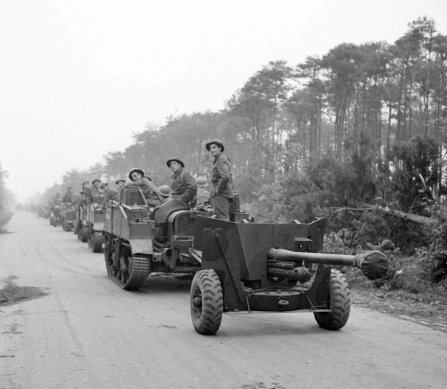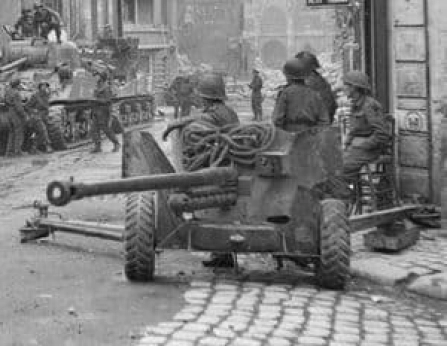Ivo Rigter Sr.
Founder & Co Owner of BAIV and Tracksandtrade
+31 6 518 22 502 ivosr.rigter@tracksandtrade.comThe Ordnance QF 6-pounder was a British quick-firing anti-tank gun that played an important role during the Second World War. Its development began in the late 1930s as a response to the limitations of the earlier 2-pounder guns, which had become inadequate against increasingly better armoured German tanks. The design of the new weapon was completed around 1940, but production was delayed due to the fall of France and other wartime priorities. As a result, the 6-pounder did not enter large-scale production until late 1941 and was first introduced into service in 1942.
The early Mk II version was built with a relatively short barrel because suitable machinery for producing longer barrels was not yet available. Later models such as the Mk IV were fitted with a longer barrel and sometimes a muzzle brake, improving both range and stability. Production was not limited to Britain; it also took place in Canada and South Africa, and the United States manufactured a licensed version known as the 57 mm M1.
The 6-pounder served both as a towed anti-tank gun and as the main armament in several British tanks. It replaced the 2-pounder in front-line service from mid-1942 onward and proved highly effective in the North African campaign, particularly during the Battle of El Alamein where it demonstrated excellent penetration against Axis armour. The gun was mounted in tanks such as the Crusader III, Churchill III and IV, Valentine, Centaur and Cromwell, after modifications were made to accommodate the heavier weapon.
Although later replaced in many roles by the more powerful 17-pounder, the 6-pounder remained in use well into the post-war years.
Through its practical design, versatility and reliability, the Ordnance QF 6-pounder became one of the most widely used and respected British anti-tank guns of the war.








Ivo Rigter Sr.
Founder & Co Owner of BAIV and Tracksandtrade
+31 6 518 22 502 ivosr.rigter@tracksandtrade.com